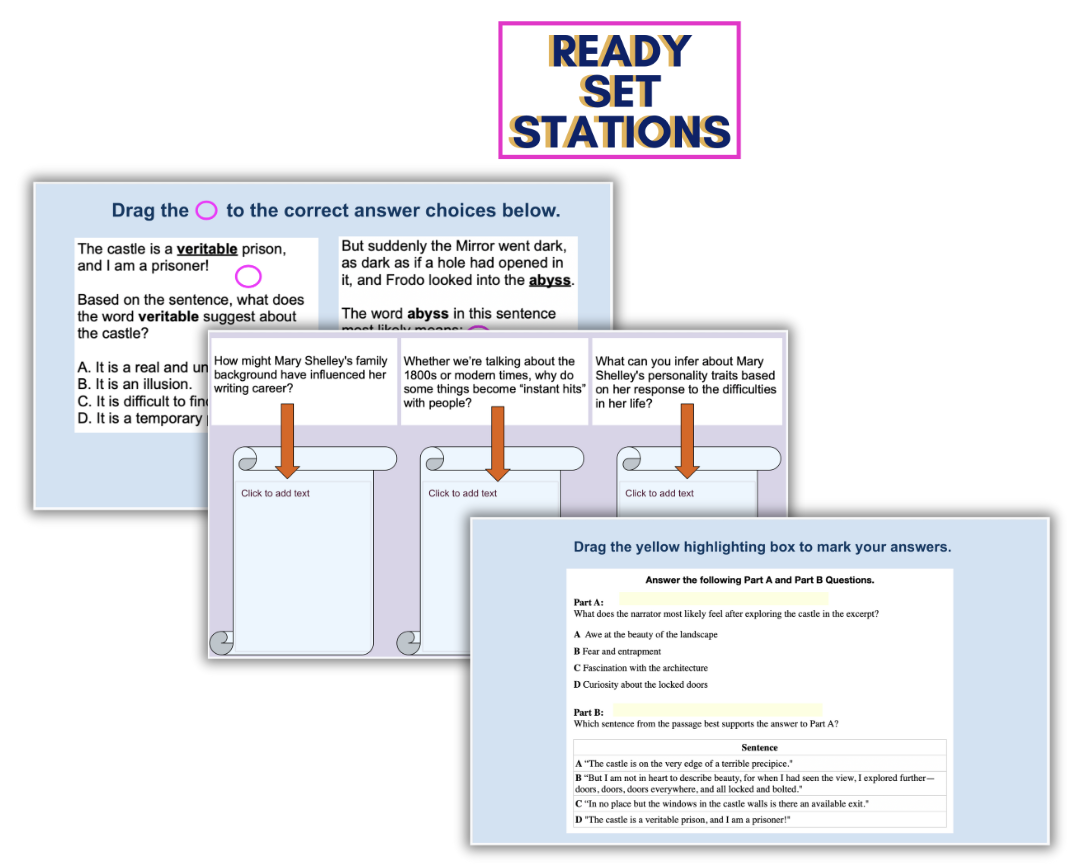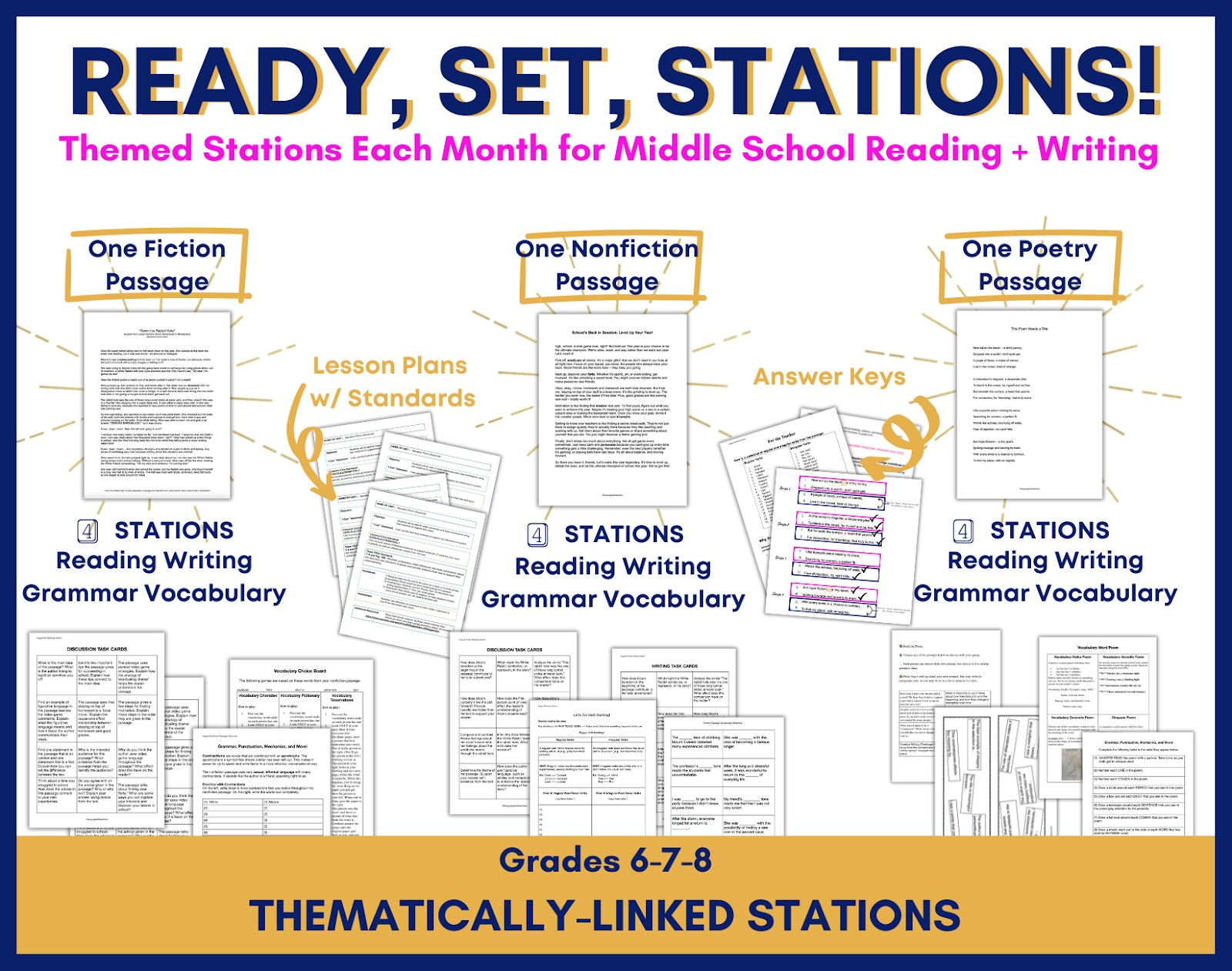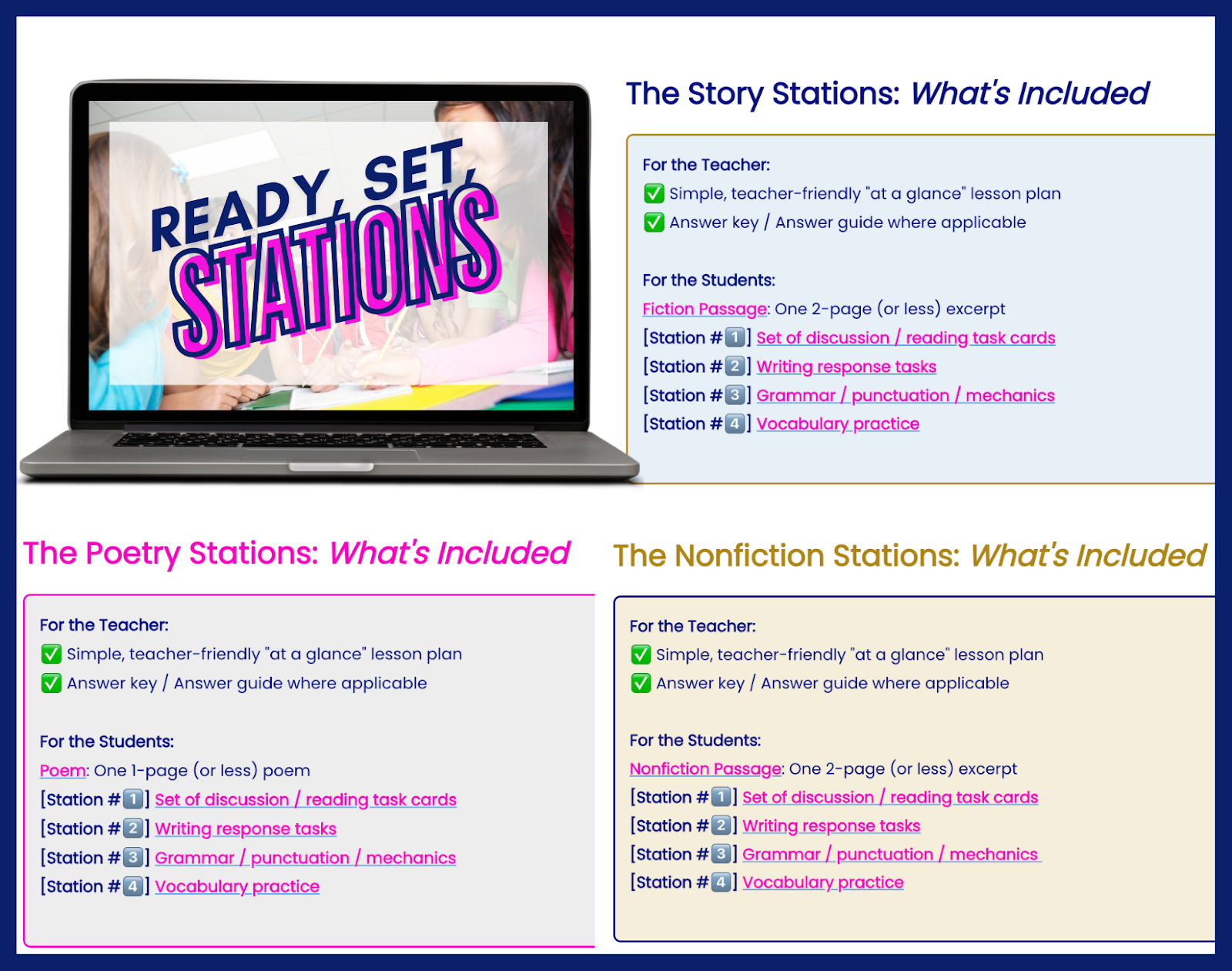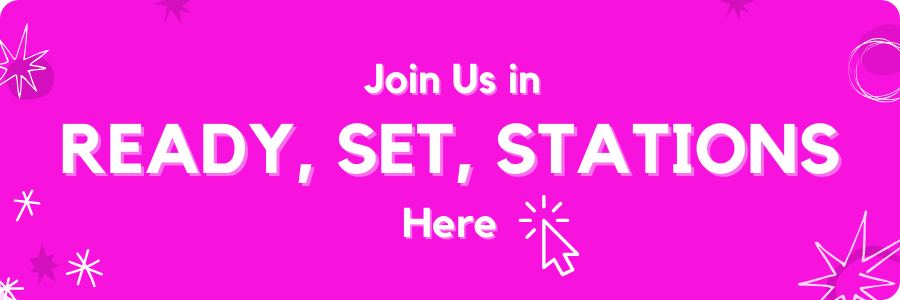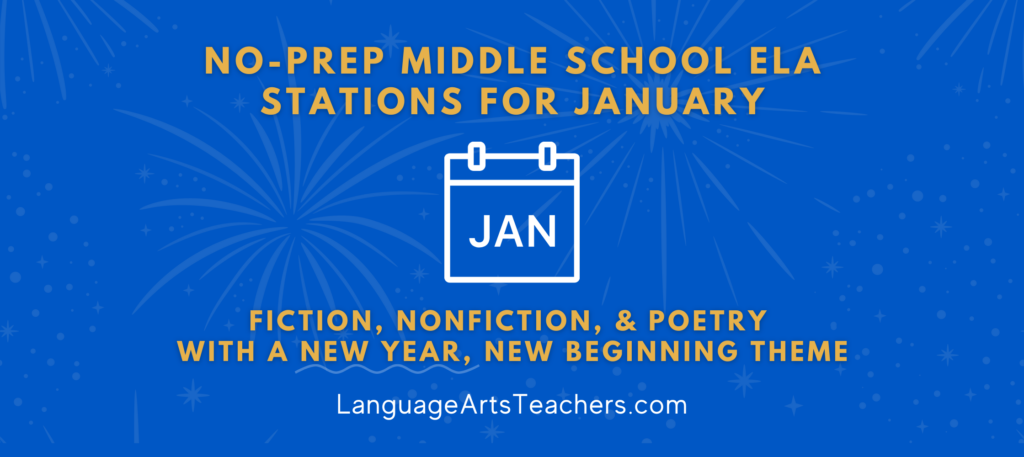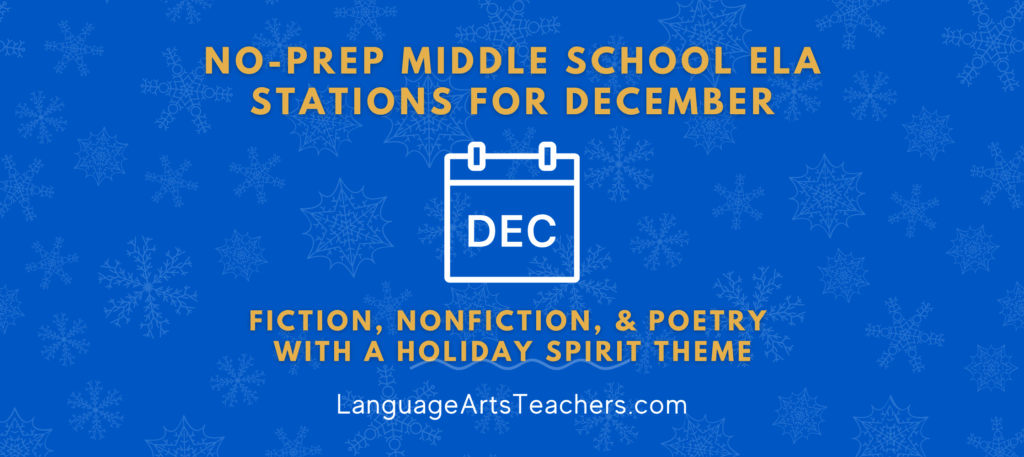Blending digital tools into Middle School ELA stations for enhanced learning and student engagement.
Want to keep your students on task and engaged at every station? Let’s plug in some digital tools that do some of the heavy lifting for you, while reducing the amount of paper and clutter that may be weighing you down.
Setting Up the Digital Stations
- Decide on 1-2 Digital Tools to Rotate Into Stations:
- Example: Google Slides for collaborative group work or Flip (formerly Flipgrid) for video responses.
- Keep it simple! You don’t need too many tools, just ones that serve specific purposes for your stations.
- Prep Your Devices:
- Ensure each station has a few devices (laptops, Chromebooks, or tablets) ready to go.
- Have pre-approved websites and apps open in advance, saving login time. Here are a few of my go-to’s:
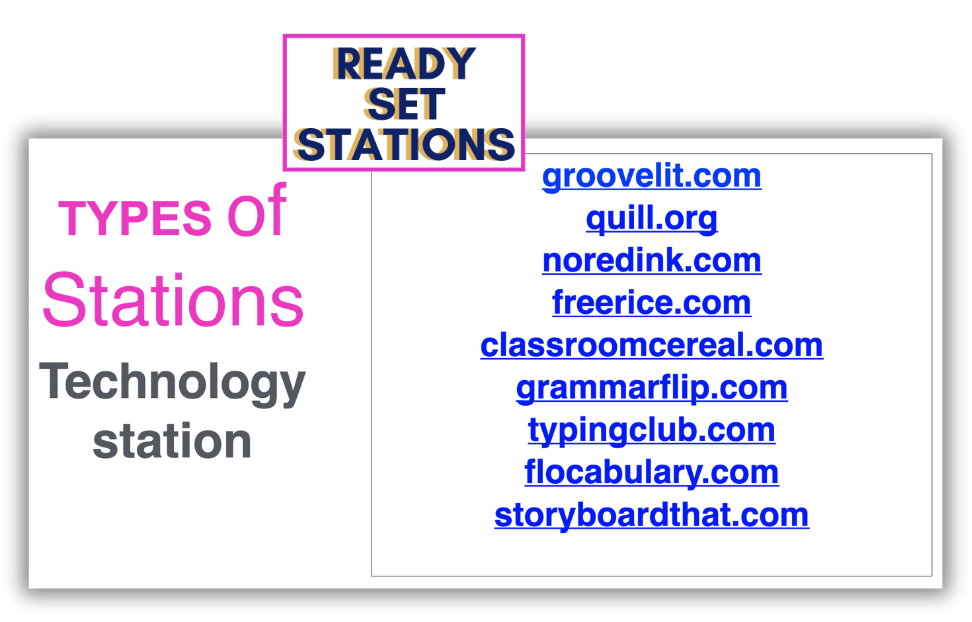
Digital Station Ideas
- Digital Reading Station (Google Slides)
- Use Google Slides to assign a digital reading passage.
- After reading, students complete Google discussion questions directly linked to the passage.
- Digital Writing Station (Google Docs + Peer Feedback)
- Students work in pairs or small groups on a shared Google Doc to:
- Edit or write short paragraphs, stories, or responses.
- Use suggestion mode for peer editing and feedback.
- Example: “You and a partner will revise a sample paragraph, using suggestion mode to add notes and edits.”
- Students work in pairs or small groups on a shared Google Doc to:
- Vocabulary Station (Quizlet or Kahoot!)
- Set up a station where students use Quizlet flashcards or Kahoot! quizzes to review vocabulary words.
- Example: “Complete the Quizlet set for 15 minutes, then play the Kahoot! on our weekly vocab words.”
- Video Response Station (Flip):
- Have students record short video reflections on Flip.
- Example: “Record a 1-minute reflection on the character motivations from today’s reading, explaining why you agree or disagree with their decisions.”
Managing Digital Stations
- Set Time Limits and Goals for Each Station:
- Example: At the Flip station, students should spend 10 minutes recording a response and 5 minutes watching and commenting on peers’ videos.
- Monitor and Support:
- Assign one student at each station as a Tech Helper in case of minor issues.
- Walk around to support groups but also give students time to problem-solve on their own.
- If using specific apps or websites, make sure they’re ones that students have seen or used before so they can jump right into the activity which saves time and helps ensure you don’t have interruptions at your teacher station (because your teacher station is where you’re likely working with a group of students, too).
Wrapping Up Digital Stations
- Group Sharing Time:
- After rotating through the stations, have students share their digital work with the class or in small groups.
- Example: “At the end of the rotation, we’ll watch a few Flip videos and discuss the responses.”
- Prepping for the Next Class:
- Leave a few minutes (and expectations!) so that students in your current class can prep the area, clean up, and organize themselves and the station materials so that when your next class walks in through the door, they’re all ready to go.
NOTE: These^ tips and steps are just a glimpse into the behind-the-scenes setup of how I build out my entire set of station materials that lives inside my monthly themed station collection.
Get the entire collection of monthly middle school stations when you join Ready, Set, Stations —> Each month’s set includes a fiction, nonfiction, poetry collection so that all the activities (reading, writing, vocabulary, grammar) go together thematically!
Let me overthink stations so you don’t have to😉
INTRODUCING:
I’ll send you 12 fresh, themed station activities loaded up ready-made style each month:
✅One fiction passage + one nonfiction passage + one poem
➡️ One reading, writing, grammar, and vocabulary station for EACH passage
🙋🏻♀️ That’s 3 thematically-linked passages with 4 stations per passage = 12 stations each month!

